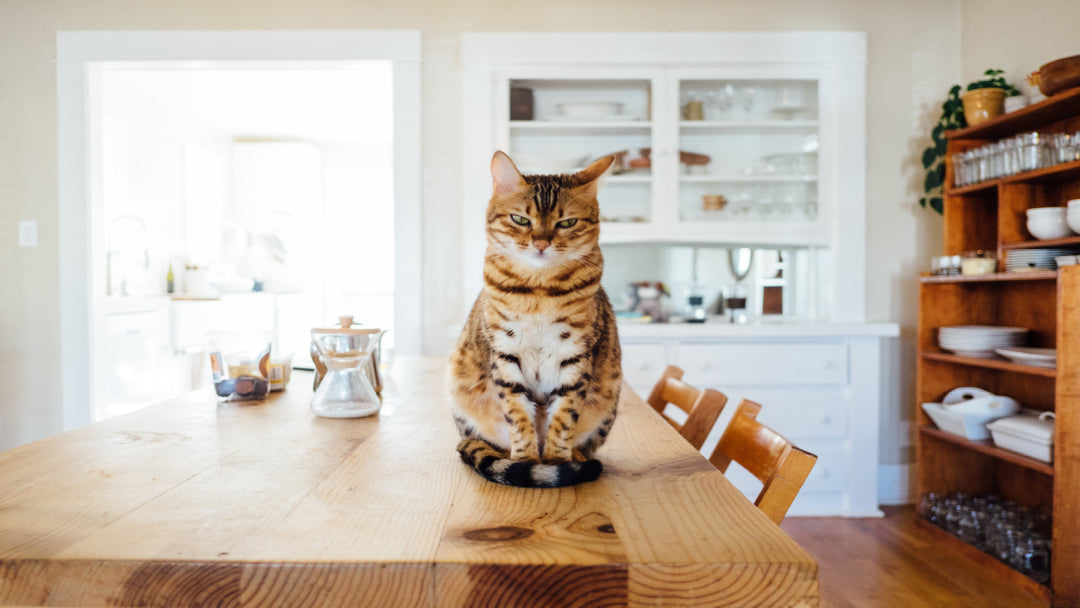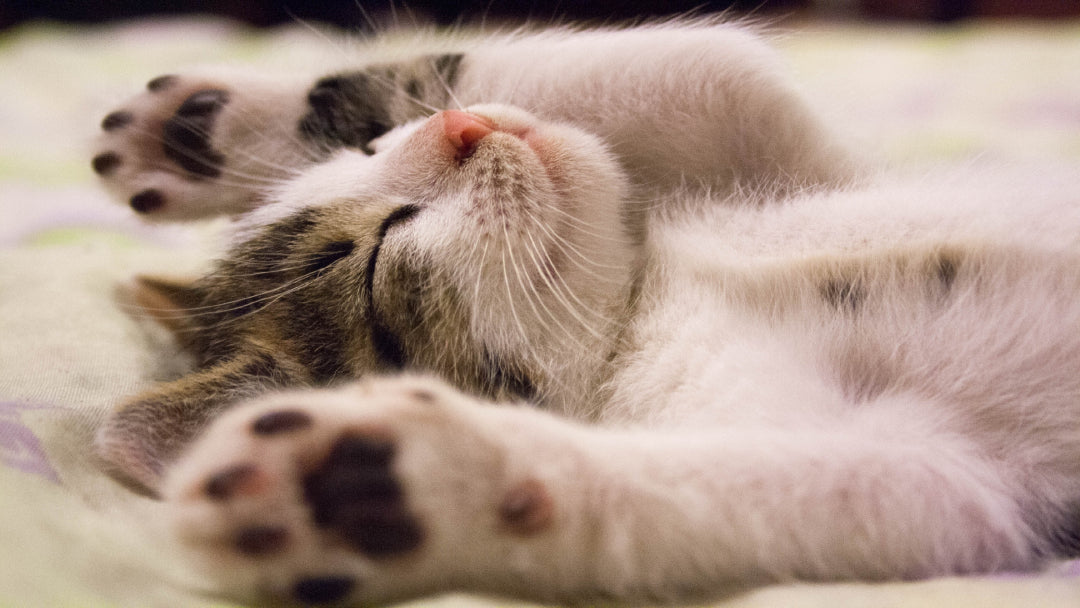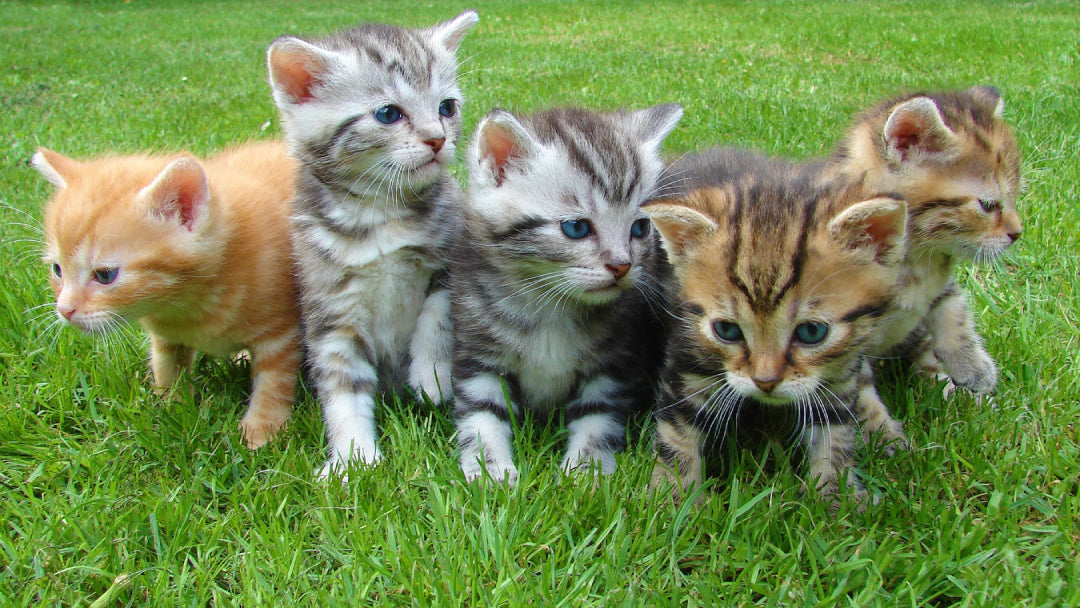If you’re a new cat owner, you may be surprised when your cat suddenly changes their behavior. This isn’t anything to worry about and is a normal part of a cat’s life.
Read: How to Help Your Dog with Separation Anxiety
What Does Being “In Heat” Mean?
Cats being in heat means that they are in their reproductive cycle and ready to mate. This typically occurs in cats two times a year, often in the spring and summer seasons.
While in heat, female cats will become very vocal, become more affectionate, and may rub up against objects and people. Male cats may also become more vocal and may roam around looking for potential mates. Cats may also beg to go outside more.
While in heat, cats may urinate more than usual in order to scent their territory and attract potential mates. They may also become more aggressive and territorial, so it’s important to provide a safe and secure environment for them.
If a female cat is not spayed, she may become pregnant while in heat. It is essential to take precautions to prevent unwanted litters of kittens.
Cats being in heat can be a rather uncomfortable time for both cats and their owners, so it’s vital to be aware of the signs and take steps to make the experience as comfortable and safe as possible.
Looking for something to help calm your cat down when they’re in heat? Try our No More Drama formula today!
How Will I Know That My Cat is In Heat?
The signs of a cat being in heat can vary, but there are a few common indicators.
The most obvious sign of a cat in heat is increased vocalization. Female cats in heat may emit louder meows and yowls than usual in an attempt to attract male cats.
Additionally, cats in heat may become more active and restless as they search for potential mates. You may also notice your cat rolling around on the ground, rubbing up against surfaces, or urinating more frequently.
Read: 5 Ways to Help Calm an Anxious Dog
Other signs of a cat in heat include behavioral changes such as increased affection and rubbing against people or objects. Your cat may become more affectionate and seek out more attention than usual. Female cats in heat may also become more promiscuous and attempt to mate with other cats.
Physical changes can also be a sign of a cat being in heat. You may notice an increase in appetite as your cat’s body is preparing for a possible pregnancy.
Is your cat having trouble eating due to the discomfort caused by being in heat? Try our Eat formula to get them back to gut happiness!

How Often Will My Cat Be In Heat?
Cats typically go into heat seasonally, usually in the spring and fall. This can vary based on the climate of their location and their breed. Female cats usually go into heat for 4-7 days, but it can last up to two weeks. During this time, the cat will be extra vocal and will often rub against objects and people.
Cats typically go into heat every 2-3 weeks during the breeding season, although some cats may enter heat more or less frequently. Factors like age, health, and environment can affect how often a cat goes into heat. Kittens under the age of 6 months may not enter heat at all, while cats over the age of 8 may start to enter heat less often.
Cats in heat usually attract a lot of attention from male cats, so it is important to keep female cats indoors during this time to prevent unwanted pregnancy. Spaying your cat is the best way to prevent them from going into heat, as it will stop the hormones that trigger the cycle.
What Do I Do For My Cats When They’re in Heat?
When your cat goes into heat, it is important to consider your cat’s health and safety. Heat can be a stressful and uncomfortable experience for cats and it’s important to do what you can to help your cat feel comfortable.
The first thing to do is to make sure your cat’s environment is comfortable. Keep the temperature in your home comfortable and provide plenty of soft bedding and toys to help your cat relax.
The next step is to make sure your cat is spayed or neutered. This will help to reduce any unwanted behaviors associated with heat, such as vocalizing and marking their territory.
If your cat is unspayed, it’s important to keep her away from other cats or animals that could become attracted to her. Make sure she is kept in a secure area and is not allowed outside.
Provide extra attention and affection to your cat during heat. Grooming, playing, and cuddling can help your cat stay relaxed and calm.
Finally, if your cat’s behavior becomes too disruptive, it’s important to talk to your veterinarian. There are medications and treatments that can help to ease your cat’s discomfort.

Heat Phases
The cat heat phases are the stages of the reproductive cycle of female cats. During this cycle, the female cat will go through four distinct stages: proestrus, estrus, diestrus, and anestrus. Each stage has its own unique characteristics and behaviors that help to identify the stage of the cycle.
During proestrus, the female cat will begin to act more affectionately and may rub her body against objects in an effort to attract a mate. This can include rolling around, vocalizing, and increased grooming. The cat’s behavior is similar to that of a cat in heat, but she is not yet ready to mate.
Learn: Easy Homemade Peanut Butter Dog Treats Recipe
When in estrus, the female cat will be receptive to mating, and she may start to display behavior such as rolling around and vocalizing again. She may also start to spray urine to indicate her readiness for mating. At this stage, the female cat will be most fertile, so if you are planning to breed your cat, this is the best time to do so.
Diestrus is the time between estrus and anestrus. During this stage, the cat’s hormone levels will slowly decline, and her behavior will return to normal. Finally, anestrus is the phase where there there is no heat cycle occurring.



